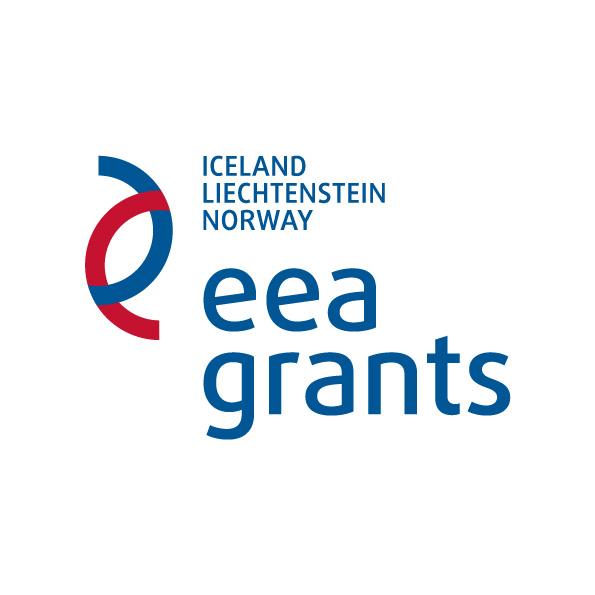The Palace of King Jan III and the surrounding park are located at the outskirts of a dynamically developing city. As new neighbourhoods and communication junctions spring up around the historic royal residence, traffic intensifies and pollution levels in Wilanów are on the rise. The unique ecosystem composed of the baroque palace with its art collection, the garden, and the park, succumbs to the pressures of urbanisation. Combining efforts, employees of the Museum of King Jan III's Palace at Wilanów and invited experts analyse this phenomenon and devise strategies for curbing the undesirable impact of urbanisation and climate change.
The support received from the European Economic Area Financial Mechanism 2009-2014 allowed us to develop the project “Social education in the conflict between urbanisation and ecology at the Wilanów Palace Museum.”
The aim of this project is to spread knowledge about the biological diversity of the ecosystem enclosed within the historic residence at Wilanów and – as a result – to foster a sense of common social responsibility for the maintenance of the biological, ecological, and economical value of this unique area where culture meets nature.
Our project – whose results will be publicised regularly in the form of talks, lectures, workshops, exhibitions, and Internet publications – will aid the local community, pupils and teachers, nature enthusiasts, town planners, and employees of other museums located in palace and park complexes, in identifying and understanding the changes they face. Thus, we also seek to determine the threats to an ecosystem placed within a major city while preventing its degradation.
As a public institution of culture, the Museum fulfils its mission of education in both culture and nature, keeping faith with a tradition established by King Jan III Sobieski, who in 1677 engaged in the construction of his summer palace in Wilanów, surrounded by gardens, a park, and supplied by an enormous farm. Paying heed to historical sources, we disseminate knowledge about the interests and achievements of a King who, far from being merely a warrior, also took pleasure in farming and funded arts and sciences. Later owners of the residence cultivated the traditions of the place, expanding the palace and park. The palace also served as the setting for the first Polish museum of arts, established by Stanisław Kostka Potocki in 1805 and opened to the public at a time when the Polish state disappeared from the maps of Europe.
The museum's strategy involves caring for the cultural and natural heritage, education through history and art, and also raising consciousness of nature. The recently concluded partial revitalisation of the gardens adjacent to the palace turned them into a major tourist attraction. Meanwhile, the addition of ecological education programmes will doubtless improve awareness of the value of natural habitats found in the 89 hectares belonging to the Museum, and highlight the importance of treating them with proper care.
The maintenance of the effects of revitalisation and adequate treatment of natural and cultural resources are necessary to avert the risk of conceding biodiversity in a growingly urban environment, under increasing pressures from building investors.
The Museum is the custodian of historic parks in Wilanów and Morysin, the latter of which has become a nature preserve in 1996. The park includes the Wilanowskie lake as well as the Służewiecki creek. The grounds of the museum are home to some 13,000 trees, including over 40 nature monuments. Due to the precious value of its natural and cultural resources, in 2012 the complex became the Wilanów Culture Park.
The Wilanów scenery within the bounds of the historic site is the last remnant of the landscape of ancient Vistula valley in Mazovia, a landscape shaped by local farmers and Dutch settlers. The old growth in the parks and garden compositions form natural complexes of great biodiversity of both flora and fauna, producing a peculiar microclimate.
The innovative nature of the project is attested to by the comprehensive character of activities involved therein, which create a quality benchmark for practices thus far not implemented in Poland: a combination of cultural and natural education with the necessary research into the biodiversity of the ecosystem and its conservation. The material and results of the research produced as part of the project will serve to foster further educational and research activities, while the employment of latest technologies will ensure public access to the resulting content within a limitless timespan.
Translation: Antoni Górny
The EEA Grants and Norway Grants represent the contribution of Iceland, Liechtenstein and Norway to reducing economic and social disparities and to strengthening bilateral relations with 16 EU countries in Central and Southern Europe. In the period 2009–2014, the EEA Grants support 86 programmes in 16 countries in Europe. The EEA Grants are available to the 13 EU member countries that joined the EU and the European Economic Area (EEA) in 2004, 2007 and 2013 as well as Greece, Spain and Portugal.
The EEA Grants are jointly financed by Iceland, Liechtenstein and Norway. The three countries contribute to the grant scheme according to their size and economic wealth. Of the €993.5 million set aside for the 2009–2014 period, Norway represents around 94%, Iceland close to 5% and Liechtenstein just over 1%. The decision-making body of the EEA Grants is the Financial Mechanism Committee, which is composed of representatives of the Foreign Ministries of Iceland, Liechtenstein and Norway.
At least 30% of the funding is allocated to environmental protection, climate change measures and renewable energy. Improving energy efficiency and increasing the share of renewables in energy use is a key objective of the Grants. Funding backs projects to improve energy efficiency, develop energy efficiency initiatives for small businesses and increase renewable energy production. Curbing marine pollution, improving environmental monitoring and preserving biodiversity are also important priorities for the EEA Grants.
Source of information about EEA Grants: eeagrants.org. For more please visit the Official Site of EEA Grants and Norway Grants.

